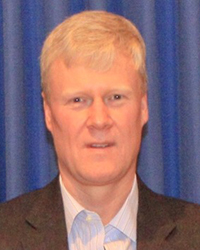
Integra Realty Resources
The increasing inventory of life science facilities in the Boston area presents another special use property category for the experienced appraisal profession. It is only natural for the life sciences industry to flourish with prestigious universities such as Harvard and MIT along with several large life science companies in the area.
The Bloomberg U.S. Innovation Index scored Massachusetts with the highest ranking for the second straight year in 2016, a testament to how much the economy’s wheels are greased by investment in higher education and research. The most recent Innovation That Matters report created in partnership with the U.S. Chamber of Commerce Foundation ranked the Boston metropolitan area as having the most innovative economy in the United States. Greater Boston also has the largest concentration of life science researchers in the United States.
Professional industry organizations such as Massachusetts Biotechnology Council (aka MassBio) and start-up incubators such as Mass Innovation Labs and LabCentral continually generate new companies with life science research space requirements.
According to Transwestern consulting group’s bioStatus year-end 2016 report, the Greater Boston lab market housed 20.2 million s/f of inventory with a vacancy rate of only 4.4%. The 10.6 million s/f Cambridge market had an even lower vacancy rate at 3.3% while the 4.1 million s/f Boston market had the lowest rate of 2.5%. However, the roughly 5.5 million s/f Suburban market had the highest vacancy rate at 8.1%.
Laboratory rental rates vary widely by location. The East Cambridge Kendall Sq. submarket near MIT has the highest asking rents ranging from $80.00 to $85.00 per s/f triple net. The Route 128 West submarket between Waltham and Lexington ranges from $35.00 to $50.00 per s/f triple net.
The tight Cambridge supply and high rent levels have led to a migration of life science tenants to larger facilities in the Rte. 128 West submarket. Many older office and R&D buildings are being retrofitted into new life science research facilities. These core and shell retrofit expenses range from $125 to $150 per s/f with another $125 to $150 for specific tenant improvements over shell. The rental suites typically consist of 40% to 50% laboratory with the remaining space being traditional office area. Earlier stage companies typically have higher lab requirements while more established companies require more office for sales and administration teams.
The high construction costs of life science facilities limit speculative construction and potential oversupply in the local market. However, facilities located further from Cambridge have lower potential for re-use by other companies. The limited number of replacement users typically results in outlying properties trading at prices below replacement cost.
It is important for appraisers to understand the difference between clinical and research laboratory space. A clinical laboratory examines specimens and reports results to healthcare providers and/or individuals for the purpose of diagnosis, prevention, or treatment of a condition. Clinical laboratories in the United States must be CLIA certified. The CLIA (the Clinical Laboratory Improvement Act/Amendment) requires that clinical laboratories meet certain federal quality and proficiency standards. A research laboratory examines specimens for the purpose of understanding a condition better or developing a clinical test. Laboratories in the US performing research testing are not subject to CLIA regulation. Clinical laboratories typically have less extensive laboratory build-outs and have higher ratios of office area.
Appraisers need to identify the specific biosafety level designations of certain laboratory areas. The biosafety levels are designated in ascending order, by degree of protection provided to personnel and the environment. Standard microbiological practices are common to all laboratories. Special microbiological practices enhance worker safety, environmental protection, and address the risk of handling agents requiring increasing levels of containment. Biosafety Level 1 or SBL-1 is suitable for work involving well-characterized agents not known to consistently cause disease in immunocompetent adult humans, and present minimal potential hazard to laboratory personnel and the environment. Biosafety Level 2 builds upon BSL-1 and so on. Most life science research facilities house multiple BSL-1 and BSL-2 suites.
Bio manufacturing facilities are more typically located in the suburbs and house limited office and laboratory areas. These are often referred to as GMP (Good Manufacturing Practices) facilities with ISO bio-manufacturing areas. The GMP refers to a system of manufacturing that guarantees reproducibility of product quality to set specifications. ISO stands for International Organization for Standardization, which offers a standard for operating a firm from management through manufacturing. It is more encompassing than GMP. The ISO systems describe specific GMP standards. The ISO system pays more attention to the management of the firm and places a number of reporting loops in the firm to ensure attention to issues. Although an ISO standard is required to maintain a GMP facility, it is essential that a firm satisfies the requirements of the client’s quality system. Generally, this means conforming to ISO standards. These certifications are common in facilities suited for the manufacture of pharmaceutical grade material for clinical trials and other bio-pharmaceutical products.
Appraisers with extensive life science property experience can be a valuable asset for real estate professionals involved in mortgage lending, asset management, and brokerage sales.
Thomas Jensen, MAI is an associate director at Integra Realty Resources, Boston, Mass.








